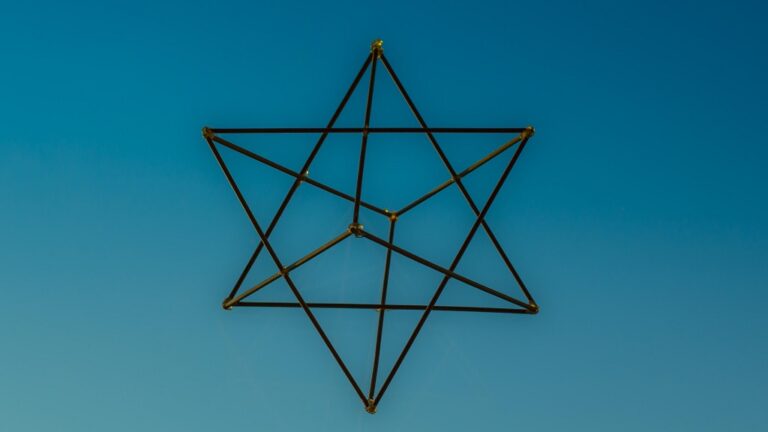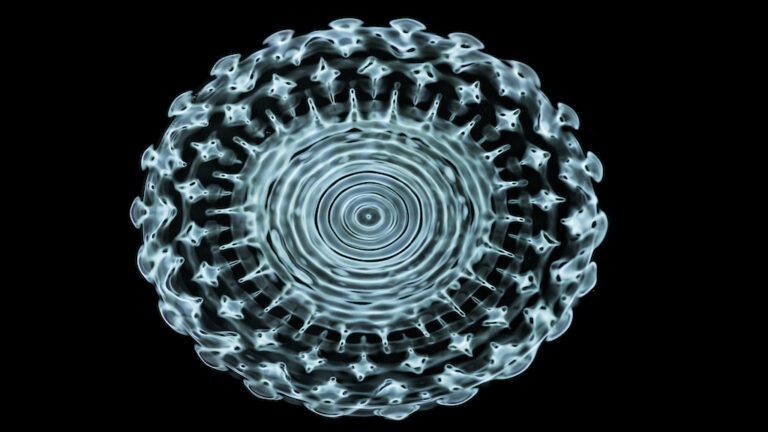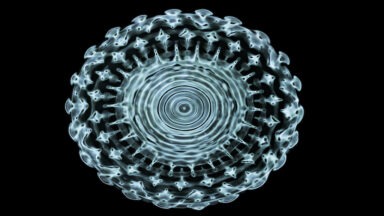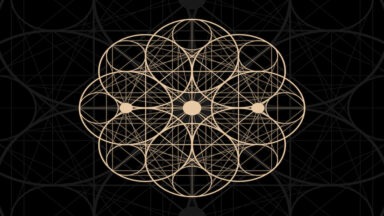What Is the Merkaba and What Is Its Spiritual Meaning?

The Merkaba is a figure of Sacred Geometry composed of two interlocking tetrahedrons that represent the union of spirit and body. This vehicle of light, spirit and body is activated to facilitate ascension and expansion of consciousness. In this article we explore what the Merkaba is, its spiritual significance and how it can transform you.
Table of Contents
- What Is the Merkaba?
- The Spiritual Meaning of the Merkaba
- How to Activate Your Merkaba: Step-by-Step Guide
- Benefits of Activating the Merkaba in Your Life
- The Merkaba and Sacred Geometry: A Deep Bond
- History and Evolution of the Merkaba
- Advanced Techniques for Working With the Merkaba
What Is the Merkaba?
The Merkaba is an ancient concept that comes from the Hebrew words “Mer” (light), “Ka” (spirit) and “Ba” (body). It is visualized as a star formed by two interlocking tetrahedrons rotating in opposite directions, creating an energy field around the person. This energy field facilitates connection with higher dimensions and supports spiritual ascension.
In practice, the Merkaba acts as a spiritual vehicle that transports both body and mind through different dimensions and states of consciousness. By activating the Merkaba, it is possible to balance internal energies, promote healing and expand consciousness. This practice is based on Sacred Geometry, which considers basic geometric shapes to be the fundamental elements of the universe.
In the serie Sacred Geometry: Spiritual Science, available on Gaia, Dr. Robert J. Gilbert explains how the Merkaba, along with the pentagram, functions as a vehicle for the soul in human energy fields. Through proven techniques and ancient teachings, he shows how to activate and use the Merkaba to transform consciousness and enhance life energy.

The Spiritual Meaning of the Merkaba
The Merkaba has a deep spiritual significance and is considered a symbol of the union between body, mind and spirit. By activating the Merkaba, an energy field is created that surrounds the body, providing protection and allowing access to higher states of consciousness. This vehicle of light is seen as a tool for spiritual transformation and connection with the divine.
From a spiritual perspective, the Merkaba symbolizes the integration and balance of masculine and feminine energies, as well as the connection between heaven and earth. Activation of the Merkaba facilitates healing of the body and mind, allowing practitioners to release emotional and energetic blockages. This, in turn, opens the way to a greater understanding of oneself and the universe.
The Merkaba is also considered a means for spiritual ascension, a process in which the individual raises his or her vibrational frequency and reaches higher levels of existence. By working with the Merkaba, one can access knowledge and experiences that are beyond the reach of ordinary perception, promoting spiritual awakening and a greater connection with the divine source.
How to Activate Your Merkaba: Step-by-Step Guide
Activating your Merkaba is a process that involves meditation, visualization and breathing techniques to connect with your inner and outer energies. Here is a step-by-step guide to help you activate your Merkaba and take advantage of its transformative benefits:
- Find a quiet place: Find a space free of distractions where you can completely relax. This will allow you to concentrate better and deepen your meditation.
- Adopt a comfortable posture: Sit with your back straight and your feet flat on the floor, or in lotus position. Keep your hands resting on your knees with palms facing up.
- Breathe deeply: Inhale and exhale slowly, focusing on your breathing. This helps calm the mind and prepares the body for meditation.
- Visualize the tetrahedra: Imagine two interlocking tetrahedra, one pointing up and one pointing down, rotating in opposite directions. Visualize these tetrahedra surrounding your body.
- Rotate the tetrahedrons: Visualize the tetrahedrons spinning at high speed, creating an energy field around you. Hold this image for several minutes, feeling your energy increase.
- Set an intention: Before concluding, set a clear intention for your Merkaba, such as protection, healing or spiritual growth. This enhances the effect of the activation.

Benefits of Activating the Merkaba in Your Life
Activating the Merkaba brings numerous benefits that can transform your life on multiple levels. This practice not only balances your inner energies, but also connects you to higher dimensions of existence.
- Energetic healing: By activating the Merkaba, you can balance and heal your energy bodies. This facilitates the release of emotional and physical blockages.
- Spiritual protection: The Merkaba creates a protective energy field around you, helping to keep you safe from negative energies and external influences.
- Expansion of consciousness: Working with the Merkaba allows you to access higher states of consciousness. This can open you to new perspectives and deepen your connection with the universe.
- Improved overall well-being: Regular activation of the Merkaba can improve your physical, emotional and mental health. This is due to the harmonization of your internal and external energies.
- Spiritual growth: The Merkaba is a powerful tool for spiritual ascension. It helps you to raise your vibrational frequency and connect more deeply with the divine.
The Merkaba and Sacred Geometry: A Deep Bond
The Merkaba is a clear manifestation of Sacred Geometry, a discipline that studies the fundamental shapes and patterns that constitute the structure of the universe. The tetrahedral star of the Merkaba is a basic geometric shape that represents the interconnectedness of all things. This geometry is not only visually harmonious, but is also believed to possess energetic and spiritual properties that facilitate connection with the divine.
Sacred Geometry is found in many cultures and spiritual traditions, from Buddhist mandalas to Gothic cathedrals. In the context of the Merkaba, these geometric shapes serve as a map for meditation and spiritual activation. Meditating on the Merkaba allows the practitioner to align with universal patterns and access higher states of consciousness, promoting healing and spiritual growth.
History and Evolution of the Merkaba
The concept of the Merkaba has its roots in ancient spiritual and mystical traditions, especially within the Jewish Kabbalah. In the Kabbalistic tradition, the Merkaba refers to the “Divine Chariot” that carries the soul into the higher realms of existence. This idea dates back to biblical times and is mentioned in ancient texts such as the “Book of Ezekiel”, where a vision of a celestial chariot carried by angelic beings is described.
Over the centuries, the Merkaba has been reinterpreted and adapted by various spiritual and esoteric traditions. In Ancient Egypt, it was considered an ascension tool used by pharaohs and priests to connect with the gods and access higher dimensions. The ancient Egyptians also used sacred geometry in their monuments and temples, integrating Merkaba principles into their architecture and spiritual practices.
In more modern times, interest in the Merkaba has been revived by the popularization of Sacred Geometry and spiritual ascension practices. The serie Sacred Geometry: Spiritual Science explores these connections in depth and shows how to activate and use the Merkaba for personal and spiritual transformation. Through techniques such as visualization and meditation, practitioners are taught how to connect with this powerful vehicle of light to reach a higher state of consciousness.
Advanced Techniques for Working With the Merkaba
To deepen the work with the Merkaba, it is essential to develop a regular practice of meditation and visualization. These advanced techniques allow for a deeper and more effective connection with the vehicle of light, facilitating spiritual ascension and energetic transformation. The key is to integrate the Merkaba into your daily life through specific exercises and continuous practice.
An advanced technique involves combining conscious breathing with detailed visualization of the Merkaba spinning at high speed. This practice not only stabilizes your energy field, but also amplifies your connection to universal energies. Additionally, the repetition of sacred mantras while visualizing the Merkaba can be employed, which enhances its protective and healing effect, and aligns your intentions with cosmic forces.
-
Rosicrucian Energetic Practices
The energetic practices of the Rosicrucians are a series of techniques designed to activate and balance the individual’s energy bodies. The Rosicrucians, an ancient mystical fraternity, use sacred geometry, including symbols such as the Merkaba, to facilitate spiritual growth and healing. One of the most common practices is meditation on the Rosicrucian cross, combined with visualization of golden energy flowing through the body, balancing the chakras and subtle energies.
Another important Rosicrucian practice is the use of rhythmic breathing in conjunction with visualization of the Merkaba. This technique focuses on synchronizing the breath with the rotation of the tetrahedrons of the Merkaba, which intensifies the connection with cosmic energies and promotes greater spiritual awareness. These practices not only increase vital energy, but also protect against negative influences and improve mental clarity.
-
Secrets of Ancient Egyptian Mystery Schools
The ancient Egyptian mystery schools held a deep knowledge of the Merkaba and its use in spiritual ascension. Initiates learned advanced meditation and visualization techniques to activate the Merkaba, allowing them to travel between dimensions and access divine knowledge. These practices were considered essential for spiritual evolution and connection with the gods.
A key secret of these schools was the use of pyramids and other symbols of sacred geometry in Merkaba activation rituals. Initiates meditated within pyramidal structures, using the concentrated energy of the pyramidal form to amplify their spiritual practices. In addition, they used specific chants and mantras to resonate with the vibrations of the universe, facilitating the activation and stabilization of the Merkaba.
Sound Shows Evidence of a Hidden Structure Throughout Universe

Sound is a powerful force, and as humans, we know this intuitively from the day we’re born. Even for those born deaf, sound can be felt physically, such that it can still evoke a response.
When we think about sound at its most basic definition, it seems relatively simple — acoustic vibrations resonating as waves through some medium. But the way sound makes us feel is more complex, nuanced, and often ineffable.
Sound can elicit chemical changes in our brain and take us into transcendent states of euphoria; it alerts us to impending dangers or opportunities in our environment; it can distract or focus our minds on a task at hand, and it can even drive us to the brink of insanity if used nefariously.
Sound is also one of the major tools we use to manifest material reality and bring our ideas to fruition — in fact, verbal communication is like magic when you consider the impact it can have on others.
The etymology of every magician’s favorite utterance, “abracadabra,” is ambiguous and contested, but many believe its roots come from ancient Hebrew or Aramaic where it means, “I will create as I speak,” or “I create like the word.”
In nearly every religion, the origin story of the universe begins with sound. In Eastern philosophy, “aum” was the primordial reverberation that sparked existence; in Christianity, God spoke the universe into existence; in Jewish mysticism, creation texts like the Sefer Yetzirah, stress the significance of specific Hebrew letters and powerful root words used to create the universe.
And beyond contemporary religion, this concept of a “sound of creation” was even taught in ancient Egyptian schools with Ptah, the god who gave life to all through his heart and tongue.
When we consider the physics of sound, these creation stories actually make a lot of sense, as sound and matter are intrinsically connected. Because sound is unable to travel through the vacuum of space, some physical medium is necessary to not just generate it, but to propagate its waves — whether that be a solid, liquid, gas, or plasma.




































